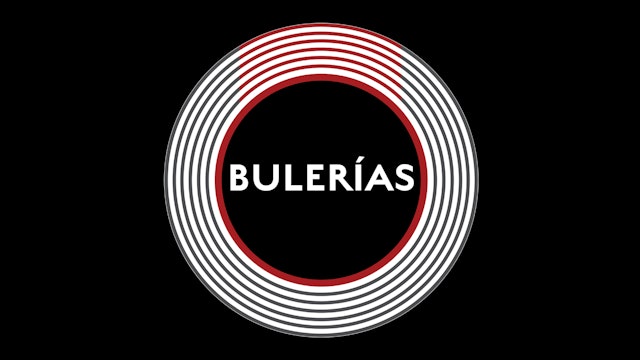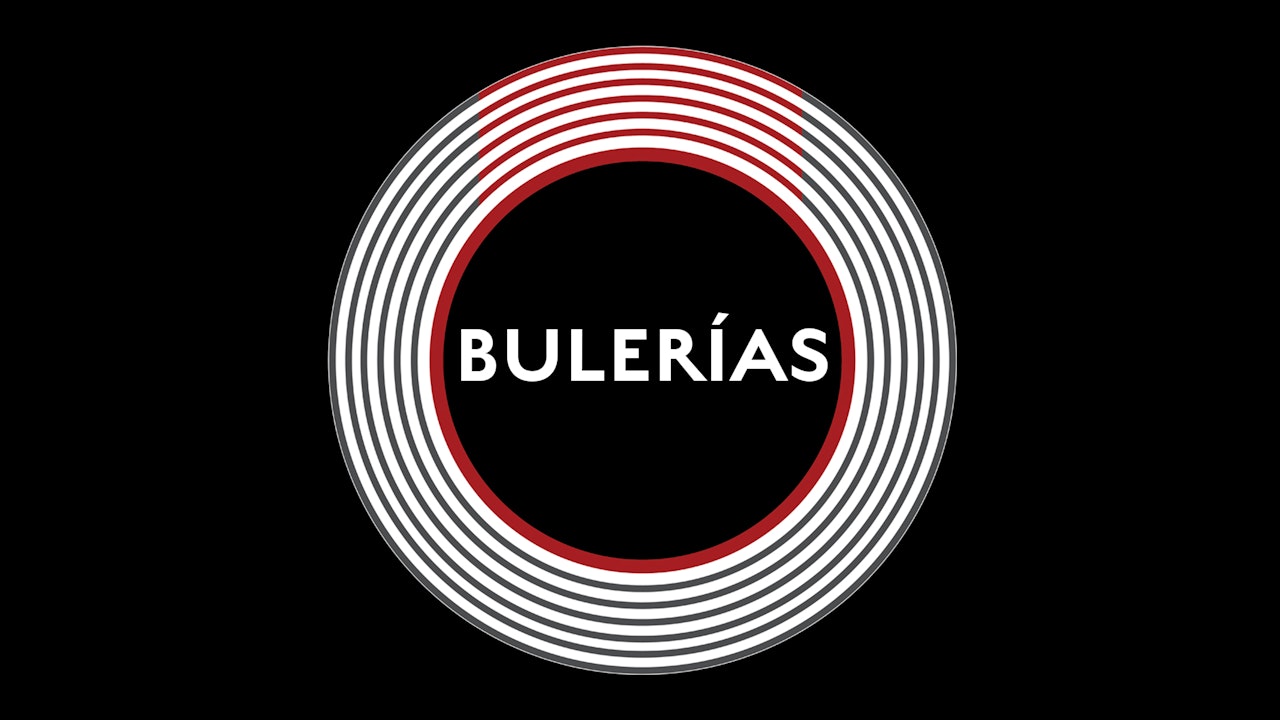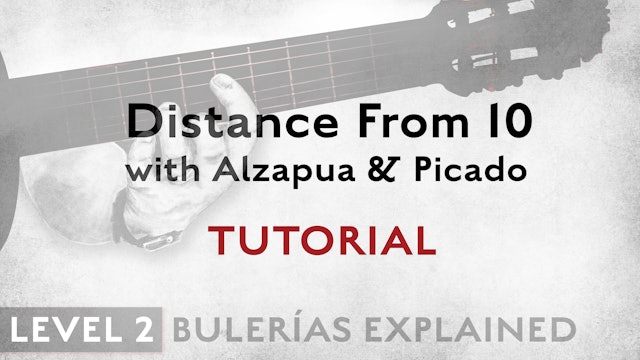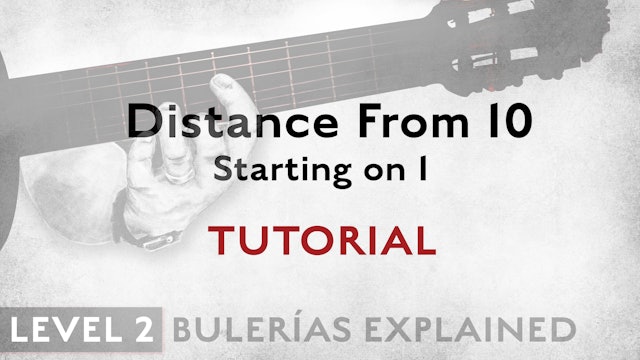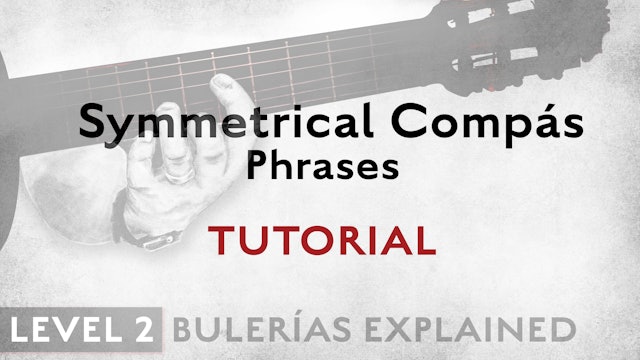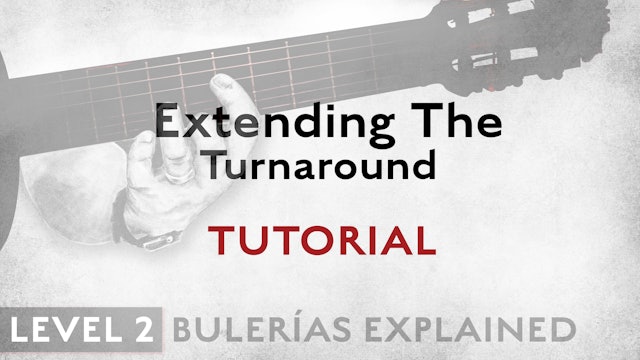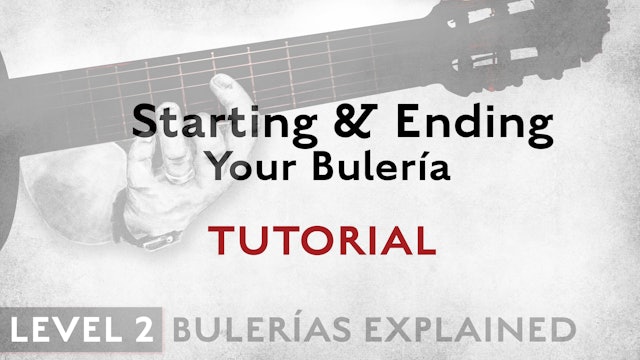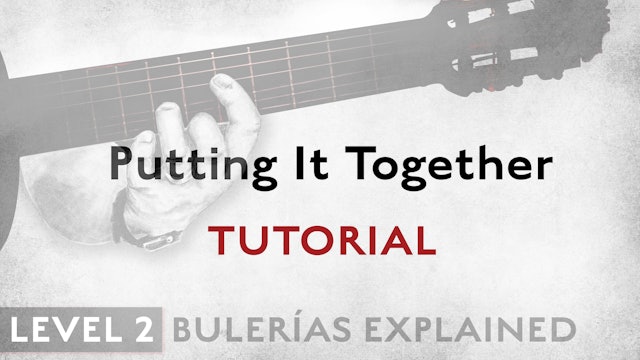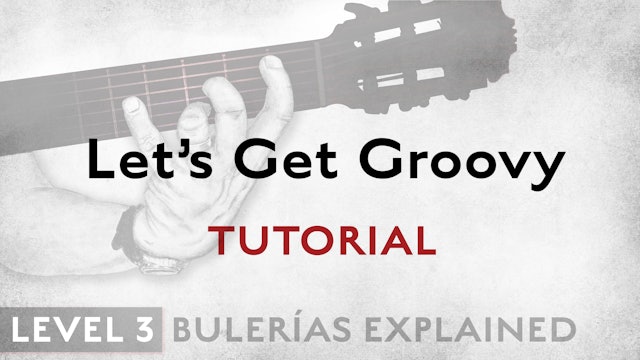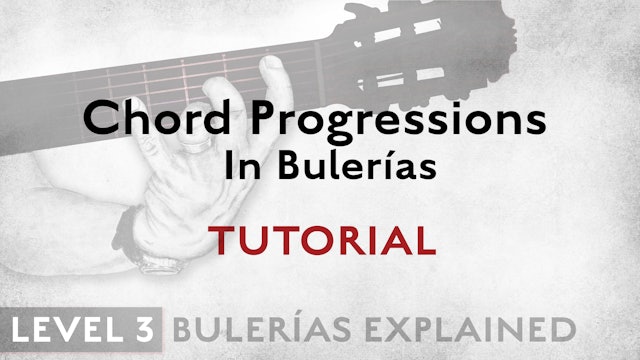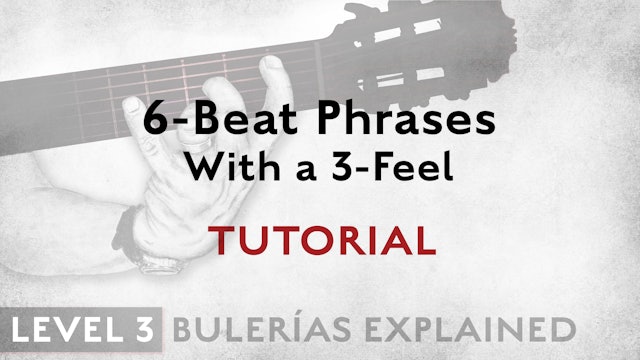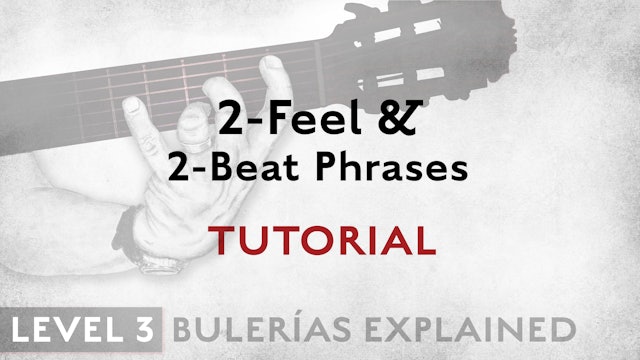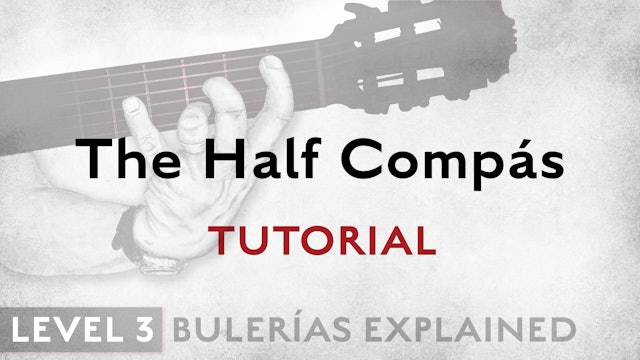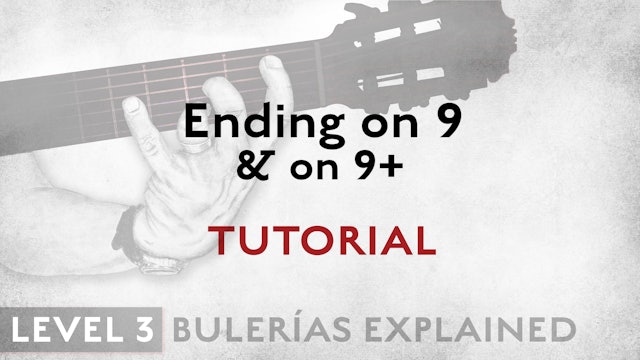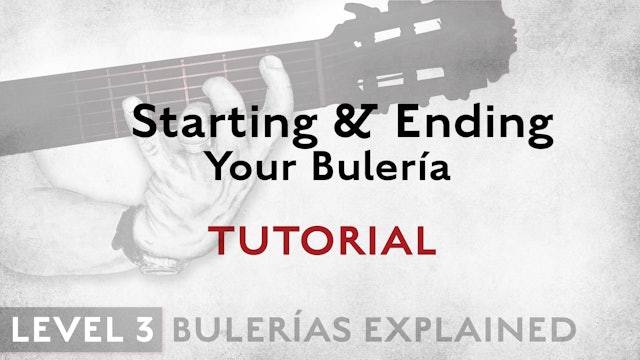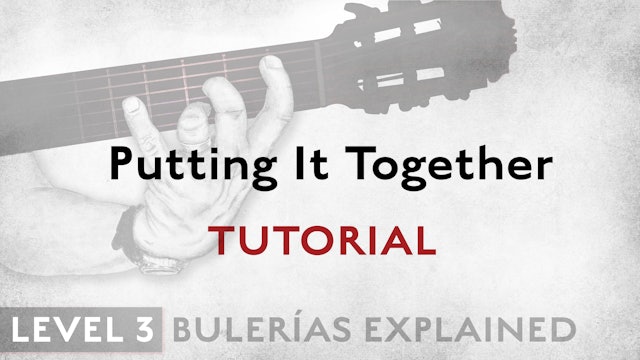BULERIAS COMPÁS
Bulerias compás is one of the most fun, but also one of the most challenging, things to play in flamenco. But we've got you covered with our Bulerias compás tutorials, and you can find them all here, covering everything from basic compás to syncopated craziness and the dreaded half-compás - all explained in a way that will give you groove and control.
-
Bulerias Explained - Level 2 - 2-Feel Triplets - TUTORIAL
As you’ll see, playing compás this way can feel like another version of the Distance from 10 exercise. So it shouldn’t feel too weird if you have the previous video under control.
-
Bulerias Explained - Level 2 - Distance From 10 with Alzapua & Picado - TUTORIAL
We look at a few more ways to feel your distance from 10, this time involving alzapua and picado techniques. A great sort of system to easily vary your Bulerias compás.
-
Bulerias Explained - Level 2 - Distance From 10 - Starting on 1 - TUTORIAL
Everything feels a little different when we start on beat 1 instead of 12, so we look at our distance from 10 ideas when the compás starts on 1.
-
Bulerias Explained - Level 2 - Symmetrical Compás Phrases - TUTORIAL
You may have heard people talk about feeling Bulerías in sixes rather than 12s. Whether you have or haven’t, we take a look at another way to feel the compás, though in a way we’ve talked about this before when discussing the Four Elements.
-
Bulerias Explained - Level 2 - Extending The Turnaround - TUTORIAL
These turnarounds can send you seamlessly into another compás, and the trick is to do this without missing a beat. We show you how to handle these turnarounds so that it all just flows.
-
Bulerias Explained - Level 2 - Starting & Ending Your Bulería - TUTORIAL
We look at some traditional ways to begin and end your Bulerias, whether you’re playing a solo piece or accompanying. Th tricky part is that both the intros and the endings start on beat 1.
-
Bulerias Explained - Level 2 - Putting It Together - TUTORIAL
Using all of the material you’ve learned so far to put together a solo guitar Bulerías. It’s not really that different from anything we’ve done in other courses as long as you stay on top of the connections between all things.
-
Bulerias Explained - Level 3 - Let's Get Groovy - TUTORIAL
It’s a small thing, but one that will make your Bulerías groove a lot more. If you have the Level 2 material under control, these little details are now what will make all the difference between plain compás and something a bit more interesting.
-
Bulerias Explained - Level 3 - Chord Progressions In Bulerías - TUTORIAL
We look at an extension of the basic Andalusian Cadence and some of the chord voicings and substitutions that we can use to vary this popular chord progression.
-
Bulerias Explained - Level 3 - 6-Beat Phrases With a 3-Feel - TUTORIAL
You definitely want to get used to feeling how 6-beat phrases flow in Bulerías. The good news is that your right hand already knows how to do this!
-
Bulerias Explained - Level 3 - 2-Feel & 2-Beat Phrases - TUTORIAL
Your right hand already knows how to do some of this, but some of it will probably be new to you. Take your time learning this, as it’s another very important way the Bulerías compás can be played.
-
Bulerias Explained - Level 3 - The Half Compás - TUTORIAL
The half compás can be really confusing when you first run into it. Here we introduce it in a way that will hopefully clear up some of the confusion and show you how to stay in compás even when you seem to be decidedly not in compás (strictly speaking)!
-
Bulerias Explained - Level 3 - Ending on 9 & 9+ - TUTORIAL
Ending on beat 9 or 9+ is one of the more common syncopations in Bulerías, but that doesn’t necessarily make it any easier. In this video we look at how to syncopate your beat 10 without losing your pulse, so that you can stay in compás.
-
Bulerias Explained - Level 3 - Starting & Ending Your Buleria - TUTORIAL
We discuss few more options for starting your Bulerías, like starting with a falseta, and also some more ways to use our traditional ending that involve some chord substitutions and some syncopation.
-
Bulerias Explained - Level 3 - Putting It Together - TUTORIAL
Using all of the material you’ve learned so far to put together a solo guitar Bulerías. It’s not really that different from anything we’ve done in other courses as long as you stay on top of the connections between all things.
-
Funk Up Your Bulerías Compás - TUTORIAL
Get comfortable resolving to upbeats instead of downbeats to make your Bulerías compás sound more modern.
-
1 Unit of Alzapua - Bulerias - TUTORIAL
You can use the basic unit of Alzapua by itself to create some fun Bulerias variations and at the same time improve your Alzapua technique.

